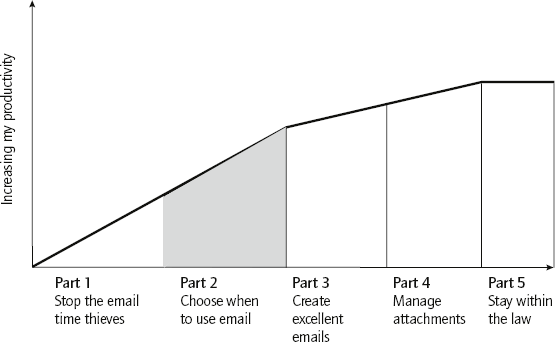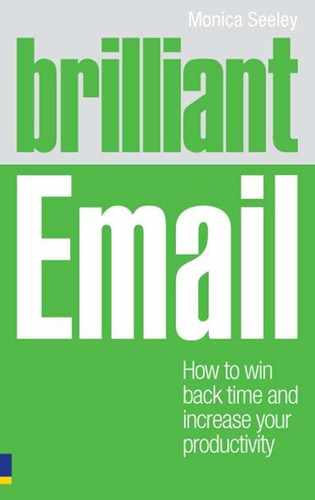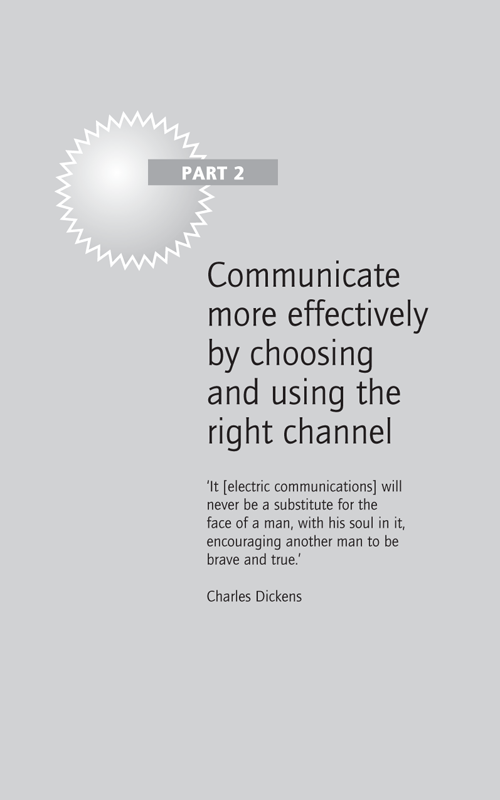In this part we provide a framework to compare using email to using other communications media. There is advice and templates to help you choose when email is the best channel, when to do things differently and how to minimise the risks when there is no clear choice.
Today, rightly or wrongly, email is the main way that people in business use to communicate. This is why most email best practice guidelines focus primarily on how to reduce the volume of email through prioritising and processing the email traffic through your mailbox. Chapters 1–6 in this book have addressed some of these challenges. The next element to saving time dealing with your mailbox is to decide when to use email and, if you do, how to ensure you convey the right message.
When was the last time you picked up the phone or walked and chatted to a colleague? When I walk into an office it’s often eerily quiet. Gone is the buzz generated by people talking and laughing. The only noise is the click-click of the keyboard as everyone has their heads buried in computer screens and, more often than not, their mailboxes.

Five steps to improving my productivity – choosing when to use email
Now more than ever before there is a huge array of communications media, from micro-blogs such as Twitter, to instant messaging and conventional face-to-face conversations. It is not always obvious which is the most productive and cost-effective channel. A trade-off and a judgement must be made about what is most important – expediency, confidentiality, the need for an audit trail, etc. Such decisions are often influenced by the state of the business, current priorities and personal location at the time the message must be communicated. The following chapters will help you to get it right.

